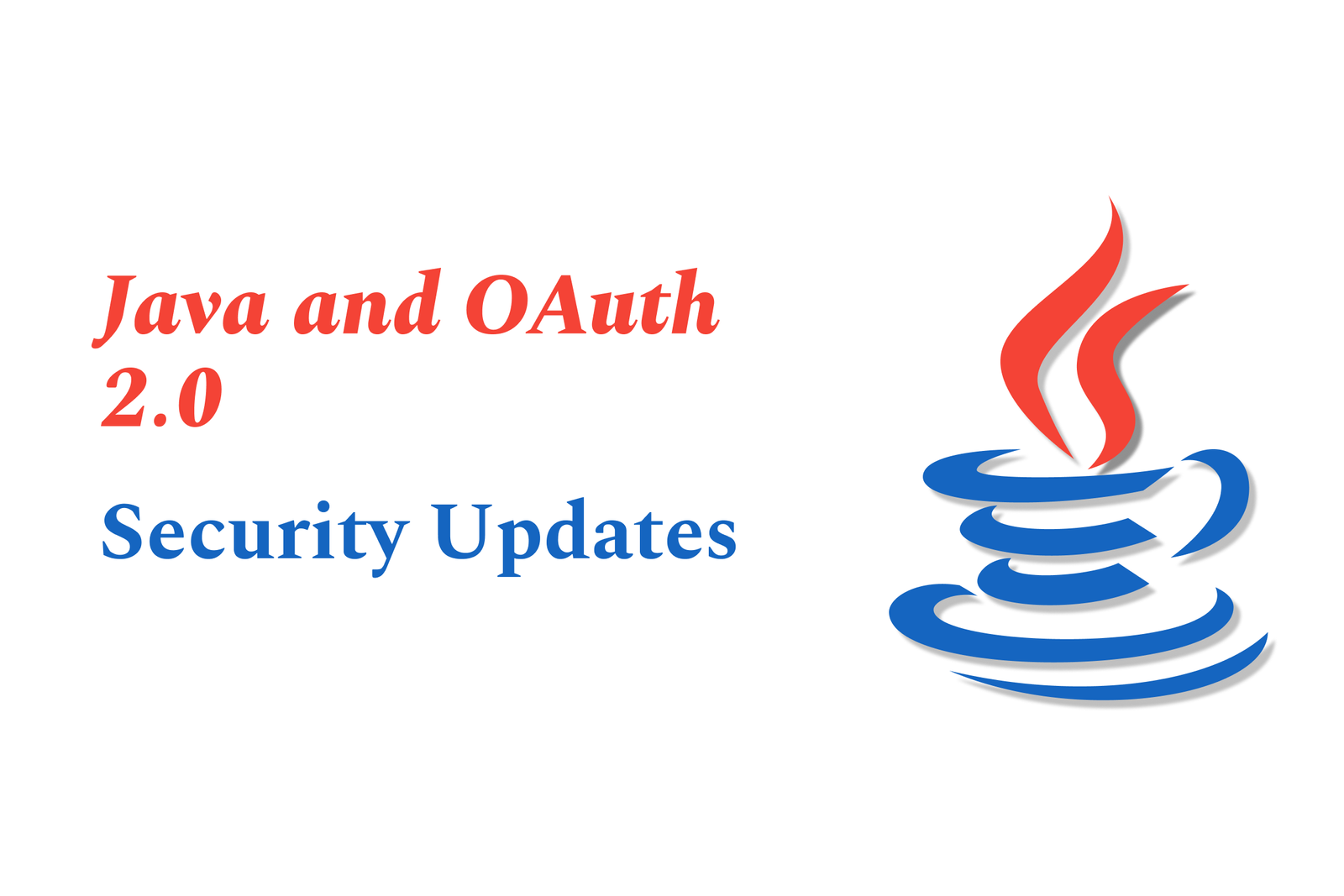Java And OAuth 2.0 Security Updates
Java developers leveraging OAuth 2.0 must adopt updated security practices, including unique per-connector redirect URIs and deprecated legacy grants, aligning with OAuth 2.1 and RFC 9700 standards to enhance authorization safety and prevent token-related vulnerabilities.
Java and OAuth 2.0 Security Updates
1 ) Overview of OAuth 2.0 and Security Practices
OAuth 2.0 is the industry standard protocol for authorization, designed for simplicity for client developers and supporting multiple authorization flows for web, desktop, mobile, and device applications.
OAuth 2.1 is an upcoming consolidation effort to unify OAuth 2.0 and its common extensions without introducing new behaviors, focusing mainly on better default security.
2 ) Key Highlights of OAuth 2.1
OAuth 2.1 aims to be a single comprehensive document outlining best practices and security recommendations for both OAuth clients and authorization servers.
The specification removes insecure or less secure legacy grants such as the Implicit grant and Resource Owner Password Credentials grant.
OAuth 2.1 is pending review and release, and widespread adoption is expected to take time post release.
3 ) RFC 9700 OAuth 2.0 Security Best Current Practice
RFC 9700, published in January 2025, provides updated security advice, extending prior RFCs related to OAuth 2.0.
It highlights new threats due to broader OAuth applications, deprecates insecure operational modes, and recommends best practices for protecting redirect based flows, preventing token replay, and securing client authentication.
Important mitigations include strict redirect URI validation, prevention of credential leakage, and protection against mix up attacks and authorization code injection.
4 ) Java Custom Connectors and OAuth 2.0 Redirect URI Updates
In the Microsoft Power Platform ecosystem (Power Apps, Logic Apps), custom connectors that utilize OAuth 2.0 must adopt a unique, per connector redirect URI.
New custom connectors automatically have a unique redirect URI set; existing connectors need to be updated to use per connector redirect URIs before February 17, 2024.
Failing to update existing custom connectors will cause them to stop working for new connections and will produce user error messages.
Developers can update their connectors either via the Power Platform web interface (security tab option) or by using the CLI tool with the appropriate setting (`redirectMode`: `GlobalPerConnector`).
After updating, developers must remove the old global redirect URI from their OAuth 2.0 app configuration and add the newly generated unique redirect URIs.
5 ) Practical Developer Guidance
Developers should proactively check and update their custom connectors to comply with the new security requirement.
Tools such as Power Apps for Admin connector can help identify which custom connectors require update.
The move to unique redirect URIs aims to improve OAuth 2.0 security by mitigating risks associated with shared redirect URIs across multiple connectors.
Summary:
The landscape of OAuth 2.0 security has significantly evolved with the introduction of OAuth 2.1 and the publication of RFC 9700, which consolidates best current security practices. Legacy less secure grant types are deprecated, and stronger protections like unique redirect URIs are mandated. Specifically, Java developers using OAuth 2.0 with custom connectors in Microsoft Power Platform must update to per connector redirect URIs by early 2024 to maintain security and operational compliance. This move enhances security by isolating OAuth flows per connector, reducing attack surfaces related to redirect URI vulnerabilities.
https://justacademy.in/news-detail/government-apps-built-using-flutter
https://justacademy.in/news-detail/android-background-process-optimizations
https://justacademy.in/news-detail/react-native?s-push-notification-personalization-tricks
https://justacademy.in/news-detail/why-react-native-is-the-best-choice-for-mvps-in-2025
https://justacademy.in/news-detail/android-system-resource-management
Related Posts
In 2025, top Angular libraries offer modern, feature-rich components and tools for building dynamic web apps. From powerful data grids to low-code platforms like UI Bakery, these libraries enhance development speed, UI design, and scalability, making them essential for Angular developers.
Migrating from AngularJS to Angular 17 involves gradually upgrading your app by running both frameworks together using tools like ngUpgrade, rewriting components in TypeScript, and adopting Angular’s modern architecture to enhance performance, maintainability, and long-term support.
Angular state management tools help organize and handle app data efficiently, improving scalability and maintainability. Popular options include NgRx for robust, RxJS-based patterns, and newer Signal Store solutions that offer simpler, reactive approaches integrated tightly with Angular’s latest features.
RxJS in Angular empowers developers to manage asynchronous data streams with powerful operators like `forkJoin`, `combineLatest`, and `zip`. Mastering these key operators in 2025 is essential for building efficient, reactive applications that handle complex event sequences seamlessly.
Angular performance optimization in 2025 focuses on improving app speed and responsiveness by using techniques like OnPush change detection, lazy loading, efficient data caching, and AOT compilation. These practices reduce load times, enhance user experience, and ensure scalable, fast Angular applications.
In 2025, Angular remains preferred for large-scale, enterprise apps with its robust, all-in-one framework, while Vue attracts developers seeking simplicity and fast development for smaller projects. Both frameworks excel, with choice driven by project needs and team expertise.
Angular Signals are a new reactive primitive in Angular 16 that enable fine-grained, efficient change detection by automatically tracking dependencies and updating only affected parts of the UI. They simplify state management and boost app performance, revolutionizing Angular's reactivity model.
Angular interview questions to prepare in 2025 focus on core concepts like components, directives, data binding, routing, and dependency injection, along with TypeScript mastery and latest Angular features to ensure strong practical knowledge for building scalable, efficient web applications.
AngularJS reached its official end of support in January 2022, meaning no further updates or security patches. To ensure app security and performance, developers should consider migrating to modern Angular versions or seek third-party long-term support options if immediate migration isn’t possible.
The Angular Roadmap 2025 highlights upcoming features focused on improving developer experience and performance, including zoneless Angular, Signals integration, enhanced Forms, async data handling, improved HMR, and expanded Angular Material/CDK enhancements, driving modern, efficient web app development.










